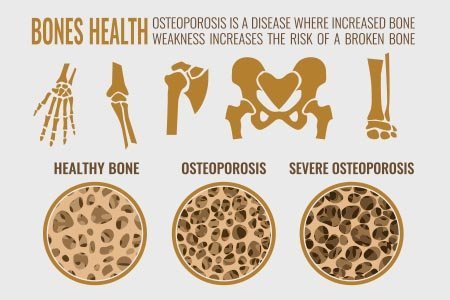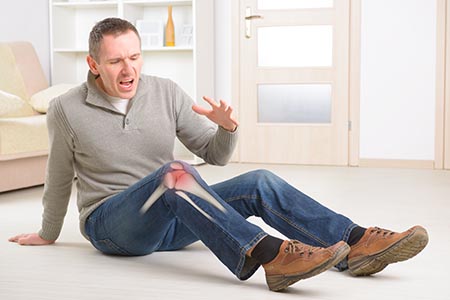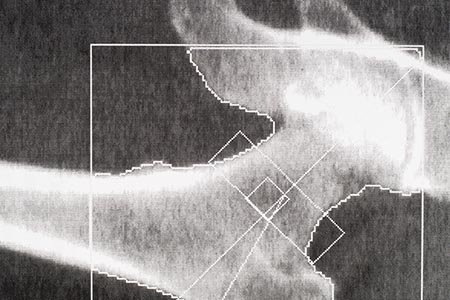Osteoporosis
Types, causes, symptoms, complications, diagnosis and treatment
What is osteoporosis?
Osteoporosis is a condition where the bones become thin, fragile, brittle and prone to fractures. Literally, osteoporosis means spongy bones.

Osteoporosis is a condition where the bones become thin, fragile, brittle and prone to fractures. Literally, osteoporosis means spongy bones.

Bones are made up of minerals, mainly calcium that is bound together by collagen fibers. The bones have a thick hard shell (cortical bone) beneath which a softer honeycomb mesh of bone (trabecular bone) resides.
Bone remodeling is a natural process of replacing old bone tissue with the new one. With progressing age, bone begins to lose a little density. However, in patients with osteoporosis, the bone loss is severe (reduced density) and the holes in the honeycomb mesh become larger (porous), thus bones become weaker and prone to injuries.
Osteoporosis or bone thinning occurs when the bone loss is not adequately resorbed (mineral uptake from blood) to form new tissue.
Peak bone mineral density is achieved by the age of 30 years, after which bone remodeling becomes poor, causing more bone tissue lost versus gained. In women, estrogen plays a major role in bone remodeling. Without estrogen, women lose out more bone cells leading to thinning of the bone.
Senile osteoporosis: Age-associated osteoporosis that usually occurs in the people of age above 70 years. In most cases, it is related to hip and vertebral body fractures.
Post-menopausal osteoporosis: As the name suggests, it occurs in women after menopause.
The early phase of osteoporosis shows no symptoms. The identifiable symptom of osteoporosis is usually a fracture from a fall or accident. Symptoms of osteoporosis generally appear only when the bones get weakened. These include:

Some factors that increase the risk of osteoporosis include:
Diagnosis is made by your orthopedist by:

Osteoporosis without any fragility fracture can be managed in the early stages by:
Osteoporosis with fragility fracture requires treatment along with the above strategies:
Osteoporosis may be prevented or delayed by slowing and reducing the extent of bone loss by:
To know more about arthritis and osteoporosis, you can request a callback and our osteoporosis specialists will call you and answer all your queries.
Disclaimer: The content of this publication has been developed by a third party content provider who is clinicians and/or medical writers and/or experts. The information contained herein is for educational purpose only and we request you to please consult a Registered Medical Practitioner or Doctor before deciding the appropriate diagnosis and treatment plan.
Talk to Our Health Care Experts!